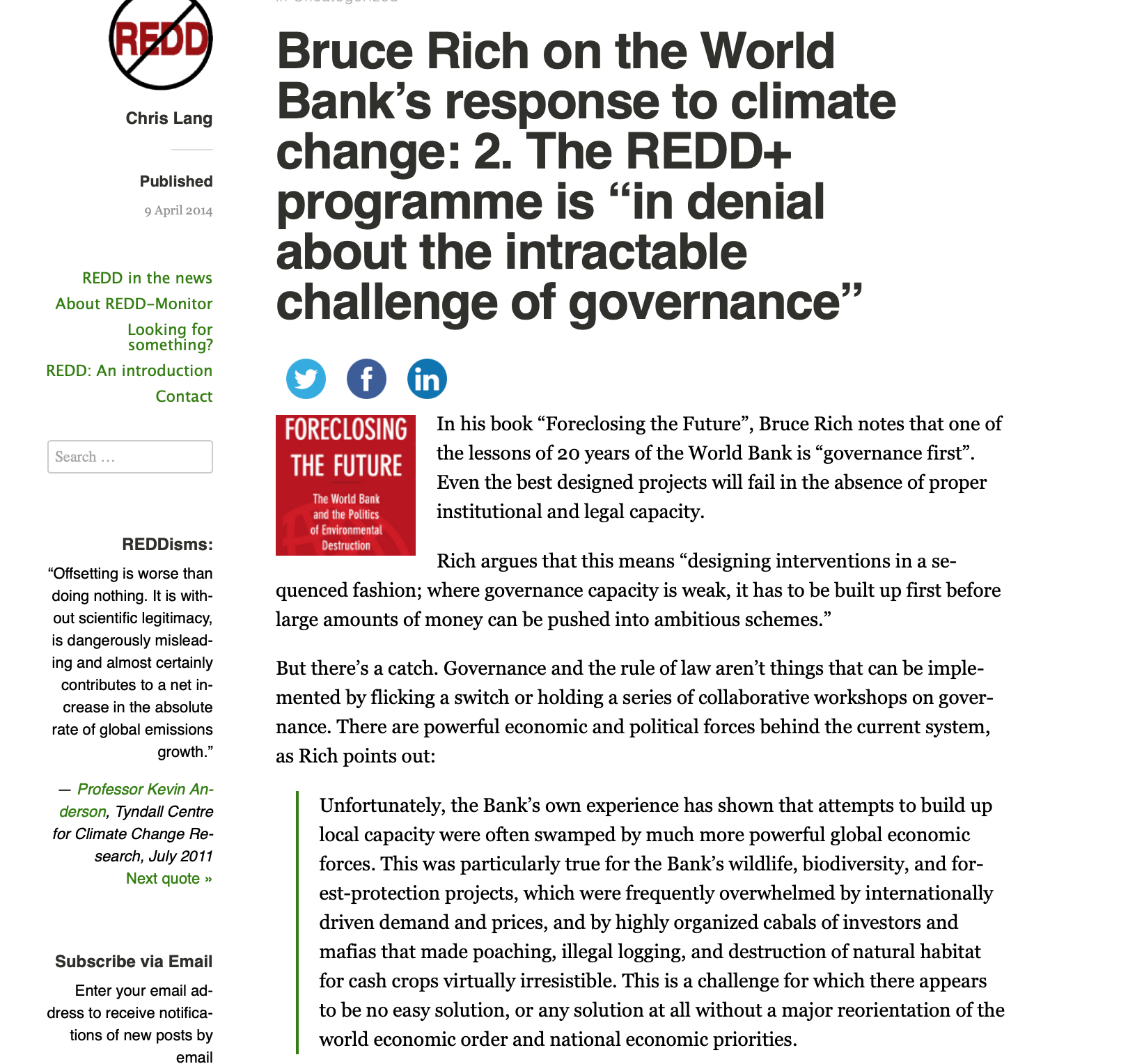- Bruce Rich, editor Chris Lang
- REDD-Monitor (blog)
- April 9, 2014
- online blog
Even the best designed projects will fail in the absence of proper institutional and legal capacity. Rich argues that this means “designing interventions in a sequenced fashion; where governance capacity is weak, it has to be built up first before large amounts of money can be pushed into ambitious schemes.” The World Bank’s own experience shows that attempts to build up local capacity were often swamped by much more powerful global economic forces. The siren allure of huge amounts of money that might be generated from future global carbon markets had seduced many: if standing forests could be conserved for their value as carbon sinks, then perhaps an international market could be established to pay people in tropical forests for not selling them or chopping them down. Carbon markets are the “financial cargo cult that had driven much of the early enthusiasm for REDD+”. REDD national plans often tended to focus on the technical complexities of measuring forest carbon. When the plans did acknowledge governance and land-tenure, it was not clear how these problems would be addressed. The REDD programme “seemed to be in denial about the intractable challenge of governance”. The complexity and novelty of REDD poses even greater challenges than the many forest management and conservation projects that have failed in the past. Worse, the vast majority of REDD countries are in the bottom half of Transparency International’s corruption index in 2011. Interpol has warned that “there is an inescapable nexus between emissions trading, illegal logging, and organized crime”. Meanwhile, carbon markets collapsed.



